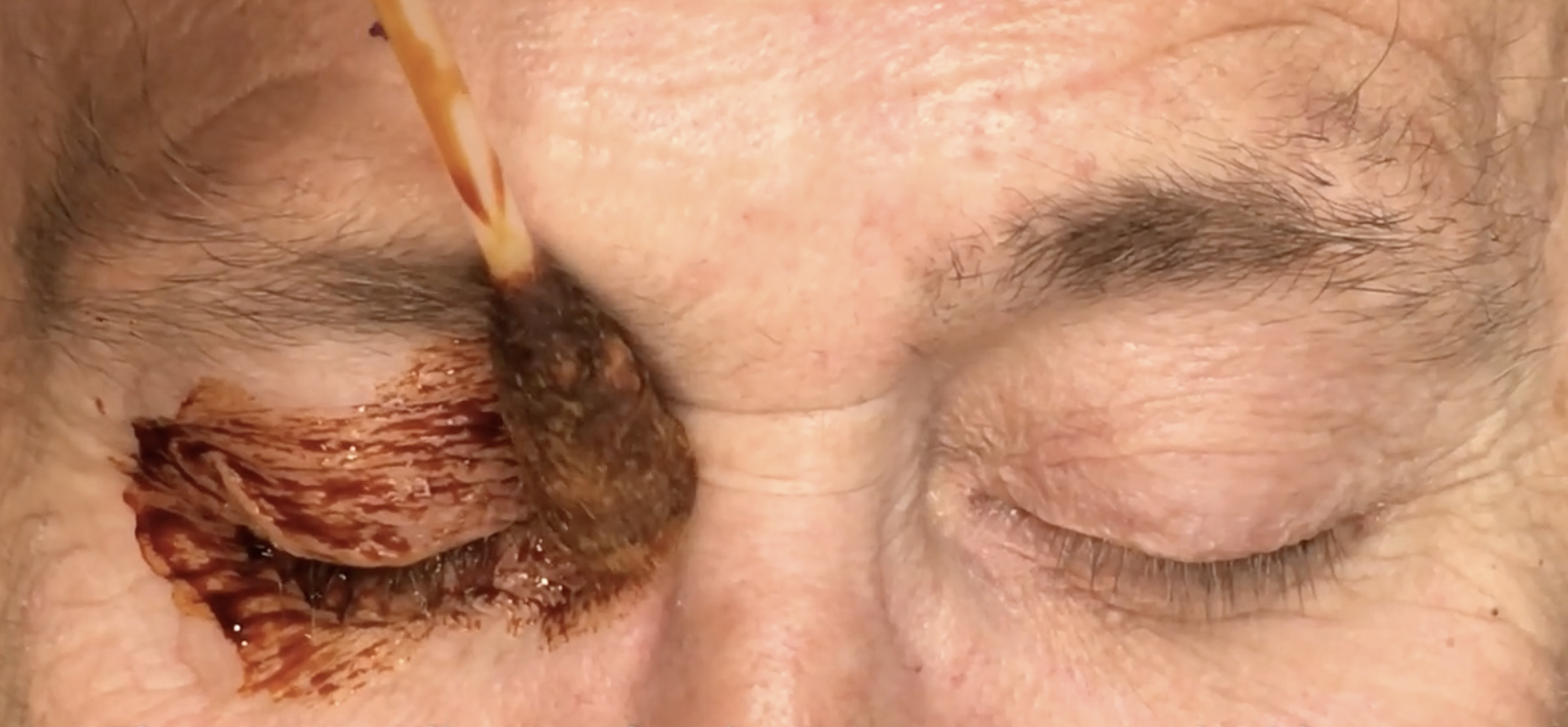 |
Frequent topical antiseptic use in an anti-VEGF regimen may cause inflammation of the lids that allows MGD to develop more readily. Photo: Leonid Skorin Jr., DO, OD. Click image to enlarge. |
Treatment for those with neovascular age-related macular degeneration (AMD) is typically intravitreal anti-VEGF injections, but many patients complain of dry eye-related symptoms associated with this option. Although dry eye is also common in elderly patients, researchers sought to confirm whether patients receiving anti-VEGF injections are more likely to suffer from dry eye and meibomian gland dysfunction.
Sixty eyes of 30 patients were enrolled. One eye of each patient was treated with multiple monthly intravitreal injections for neovascular AMD and compared with healthy controls. Dry eye was evaluated using tear film breakup time (TBUT), Schirmer 1 test, the Oxford scale and the ocular surface disease index (OSDI). The rate of meibomian gland loss was evaluated by meibography and graded and scored from grades zero to three for each eyelid.
Schirmer 1 and TBUT measurements were lower and OSDI scores were higher in eyes treated with at least six intravitreal injections compared with healthy untreated eyes, but the differences were not statistically significant. However, treated eyes had a significantly higher mean lower eyelid meiboscore.
“Treatment with intravitreal anti-VEGF injections is a prolonged repetitive procedure, after which many patients complain of dry eye-related symptoms. As the treatment and the antiseptic precautions have to be repeated, the ocular surface faces more inflammation, which can trigger dry eye syndrome,” the study authors explained in their paper.
Povidone-iodine and the preservatives in topical eye drops may cause this inflammation. Previous studies have shown that concentrations higher than 5%, for example, and treatment longer than two minutes can both lead to corneal epithelial and endothelial cell damage.
“Although intravitreal anti-VEGF therapy is the gold standard, these patients may suffer from dry eye and/or meibomian gland dysfunction,” the investigators concluded. “In our study, we found statistically significant differences in meibomian gland dropout ratio, although treated eyes showed no significant differences in the dry eye tests.” They advise doctors to be vigilant for dry eye and meibomian gland dysfunction in these patients. “Due to the chronic nature of the treatment protocols, prolonged and repeated exposure to povidone-iodine, topical antibiotics, topical anesthetics and preservatives in eye drops might predispose to ocular surface inflammation. OSDI scoring before multiple injections can help diagnose dry eye earlier.”
Kiyat P, Palamar M, Nalcaci S, Akkin C. Dry eye and meibomian gland dysfunction in neovascular age-related macular degeneration patients treated with intravitreal injections. Turk J Ophthalmol. 2022;52:157-61. |


